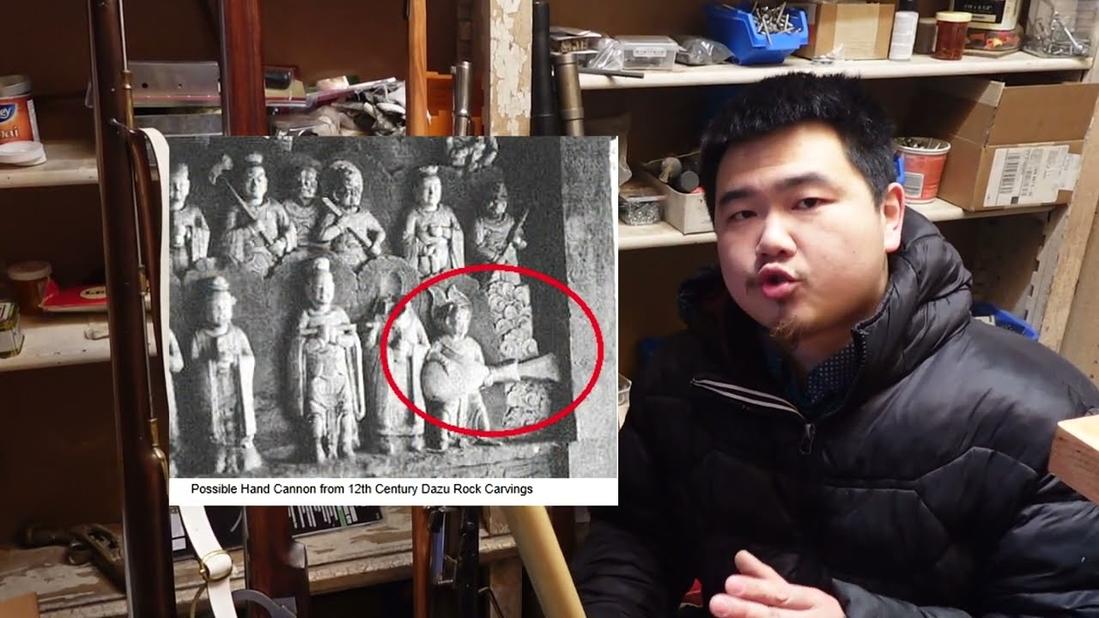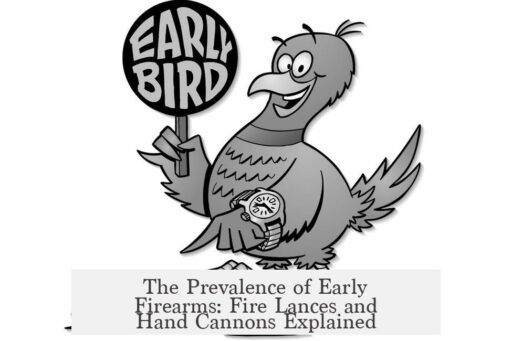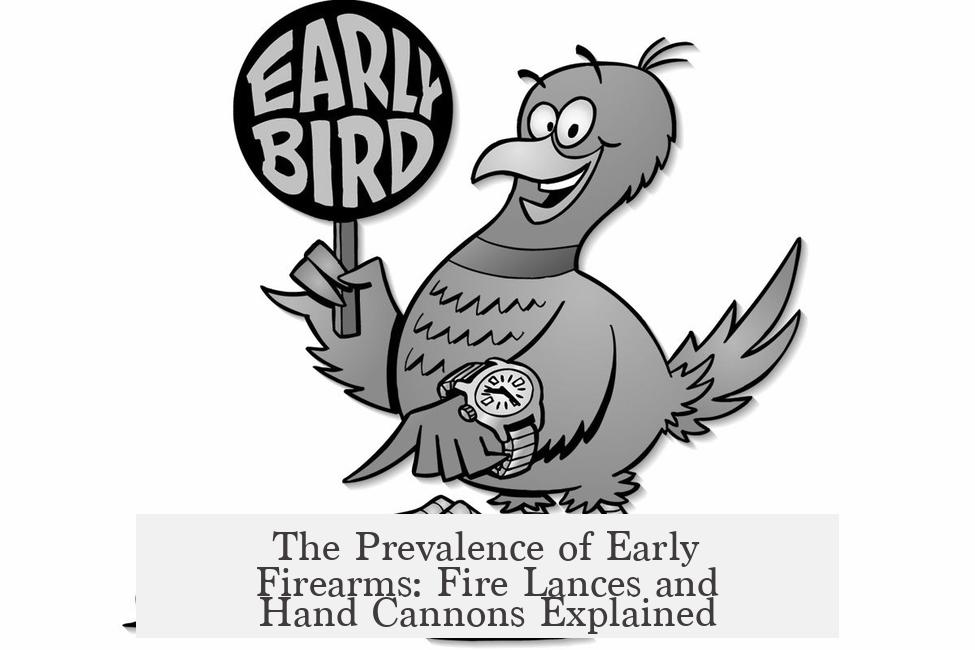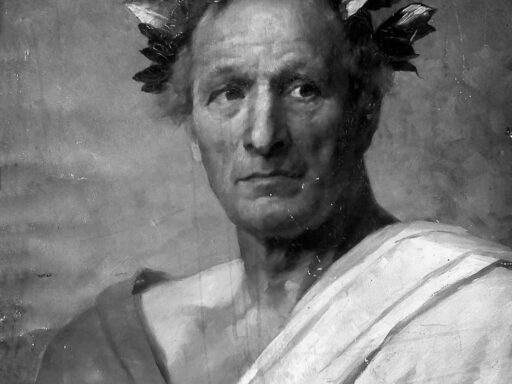Early firearms like the fire lance and hand cannon were not widely prevalent compared to larger artillery pieces during medieval warfare. These weapons saw use mainly from the 9th to the late 14th century, but their inconsistent gunpowder and poor accuracy limited their effectiveness and scope.

Gunpowder technology, discovered in 9th-century China, evolved for centuries but remained inconsistent in quality until the late Middle Ages. This inconsistency hindered predictability and accuracy for early firearms. Without a reliable propellant, achieving precision was nearly impossible. Early gunpowder’s variable quality made it challenging to control projectile trajectories, which restricted these weapons’ tactical roles.
In Europe, refinements in gunpowder composition started in the late 13th and early 14th centuries. These improvements involved discovering sources with higher potassium nitrate content and processes like boiling the leachate or using wood ash to enhance quality. Additionally, corning the powder increased its reliability and efficiency. Such refinements enabled more dependable use of firearms but were gradual and incomplete during the era of hand cannons and fire lances.

The fire lance, essentially a spear with a tube ejecting flames or projectiles, and the hand cannon, a small, primitive tube firing projectiles, primarily targeted large, immobile objects. Military commanders seldom used these weapons for precision strikes. They aimed at castle walls, massed troops, or enemy ranks to create shock and cause general damage. Their primary function was psychological as much as physical disruption, causing confusion and fear rather than secure kills.
Despite their novelty, these early firearms were less effective than established weapons like crossbows or longbows. Archery and traditional artillery consistently offered superior accuracy and reliability. Hand cannons and fire lances were cumbersome, slow to reload, and demanded favorable conditions to be effective. Consequently, their deployment remained limited, particularly since artillery such as cannons and multi-barrel devices (e.g., ribaudequins) demonstrated better battlefield impact and usage frequency.

Historical records on firearm prevalence during medieval times are sparse and ambiguous, complicating efforts to quantify their presence in armies. Still, it is clear that larger artillery pieces dominated siege warfare and critical battles. Hand-held firearms were a supplementary technology during this period, not a mainstay of martial arsenals.
Early firearms were particularly ineffective in highly mobile warfare contexts. Regions like the Asian steppes and parts of Eastern Europe favored fast-moving mounted troops using bows and lances. These mounted warriors retained battlefield superiority well into the 16th century, as slow-loading, inaccurate firearms could not counter their tactics effectively. Mobility and rapid firing rates of traditional weapons outmatched early gunpowder arms.

The early 15th century marked a turning point. Advances in gunpowder production brought enhanced consistency and predictability. This allowed weapons to achieve greater accuracy. As a result, the archaic fire lance and hand cannon gradually gave way to longer-barreled arquebuses, matchlock muskets, and eventually rifles. These new firearms offered improved aiming, reliability, and lethality, reshaping warfare fundamentally.
Firearms transformed from shock instruments to actual projectile weapons targeting individual enemies purposefully. Designs became sleeker and more ergonomic, evolving from crude tubes into recognizable firearms like Queen Elizabeth’s Pocket Pistol. These developments laid the groundwork for widespread firearm adoption in subsequent centuries.
| Aspect | Details |
|---|---|
| Time of Use | From 9th to late 14th century primarily |
| Gunpowder Consistency | Variable; improved only in 15th century |
| Tactical Role | Shock effect on large, immobile targets |
| Prevalence | Limited compared to cannons and artillery |
| Effectiveness | Less than archery and artillery; poor in mobile warfare |
| Transition | Replaced by arquebuses and muskets in early 15th century |
- Early firearms had limited battlefield prevalence and impact due to technological and tactical constraints.
- They functioned largely as shock weapons against massed or fortified targets.
- Gunpowder quality was inconsistent, delaying firearm accuracy and reliability.
- Heavy artillery remained more common and effective during this era.
- Mounted and ranged troops dominated mobile warfare where early firearms faltered.
- Advancements in the 15th century led to more precise and widely adopted firearms.
How Prevalent Were the Early Forms of Firearms Such as the Fire Lance and Hand Cannon?
Early firearms like the fire lance and hand cannon were somewhat rare and not everyday weapons on medieval battlefields. Their use was more about creating shock than scoring precise hits. These early gunpowder arms served specialized roles, mostly against large, immobile targets. But there’s more to the story than just “rare and rough.”
Let’s fire up a fascinating journey through the smoky haze of history, where gunpowder was the new magic dust. How did these primitive firearms come about? How common were they? And why did they never quite outshine the trusty old bow and arrow? Buckle up!
The Slow Birth of Gunpowder and the Rise of Firearms
It all begins in 9th century China — the birthplace of gunpowder. Early formulas were more guesswork than science. Imagine trying to bake a cake when you only know you need some “black magic powder” but no recipe! Consistency? Forget it. This made the early guns unpredictable.
For centuries, the best gunpowder was a potluck mystery involving saltpeter, charcoal, and sulfur—but not in any exact recipe. Without reliable powder, those fire lances—the gunpowder spears shooting flames and shrapnel—and hand cannons were more showy than sharpshooters.
Europeans got wind of this black powder magic around the 13th century. They experimented like mad scientists (minus the lab coats), discovering ways to extract purer potassium nitrate—the real “secret sauce.” Boiling wood ash leachate and “corning” the powder (making granules instead of dust) allowed the powder to burn steadily. Suddenly, these early firearms became less like wild wolves and more like domesticated hounds. Progress!
Who Actually Used These Things, and How?
In practice, fire lances and hand cannons were mostly tactical oddities. Their greatest hit? Firing at grand, stationary targets. Think castles, fort walls, and dense groups of soldiers. Due to inconsistent gunpowder, aiming was like throwing darts blindfolded. So commanders wisely chose big targets that were easy not to miss.
When you asked a medieval soldier, “How are the fire lances doing?” the usual answer was a shrug. “Better than a torch, worse than a bow.” Indeed, longbows and crossbows, with their reliability and rapid fire, stayed kings of the battlefield. Early gunpowder weapons often played the role of “shock and awe”—a loud pop, a flash, some smoke, and a morale shake-up rather than sniper fun.
But Were They Everywhere? Unsurprisingly, No.
Quantitative data about how frequently fire lances or hand cannons appeared is as scarce as a unicorn in medieval manuscripts. Chroniclers focused more on grand events than counting weapons. What historians gather suggests cannon artillery—big, slow, and intimidating—was more common than one-handed hand cannons.
Interesting tidbit: multi-barrel artillery pieces named ribaudequins, capable of firing many small shots rapidly, appear in records of the 1340 Battle for Ghent under Jacob Van Artevelde. These played more prominent roles in siege and defensive warfare, showing a preference for artillery over personal handheld cannons.
Why Didn’t Militaries Embrace Fire Lances and Hand Cannons More?
The culprit was mobility and precision—or the lack thereof. On the Asian plains or the fast-moving eastern European steppes, warfare favored mounted archers and lancers who moved and fired swiftly.
Try loading and firing a hand cannon in a cavalry charge… not ideal. These firearms were slow to reload and unpredictable, making them ineffective in mobile warfare where speed and accuracy mattered. So mounted warriors with bows and lances stayed the go-to for centuries. The fire lance was better suited for the chaotic cluster of a siege than for chasing down raiders.
The Leap to Better Guns in the 15th Century
The turn of the 15th century marks a pivot. Gunpowder quality improved dramatically, finally letting shooters predict where their bullets would land. Artillery transformed from bulky, ornamental “Dulle Griet” monsters to more manageable and aimable cannons—like the elegantly named Queen Elizabeth’s Pocket Pistol. Hand cannons and fire lances faded, replaced by longer, easier-to-use firearms: arquebuses, matchlock muskets, and, eventually, rifles.
This evolution wasn’t overnight, but it was pivotal. Suddenly, hitting a big target was no longer a “hope and spray” affair; shooting precise enemies was feasible. The era of early fireworks gave way to the age of practical guns.
What Can We Learn from This Fiery History?
- Early firearms were rarely frontline tools. Their main job was to intimidate and disrupt formations, not to dispatch foes efficiently.
- They were less reliable than bows or cannons. This limited their real battlefield value.
- Their niche use was mostly in siege or set-piece battles. Quick-moving warriors ignored these wheezing weapons.
- Gunpowder quality was the game changer. Once consistent powder arrived, firearms finally became trustworthy weapons.
In short, fire lances and hand cannons were a fascinating but sometimes frustrating experimentation stage. They were like the musical tuning notes before the symphony of modern firearms. Their rarity and clumsiness don’t diminish their importance. After all, they ignited a dramatic shift in warfare that shaped history.
Final Thoughts: Firearms Then and Now
It’s tempting to picture gunpowder’s early days as a sudden breakthrough—but in reality, it was a long haul. Imagine trying to bet on a horse every day when sometimes it trots, sometimes it gallops… or just sits down. That was early gunpowder weaponry: unreliable but promising.
Have you ever held a replica fire lance or a hand cannon? They feel like relics of a time when humans flirted with new destructive powers without fully understanding them. They look rough, smell smoky, and pack a punch that’s all flash and limited bang.
So, how prevalent were they? More special guests than main event players. Yet their legacy is loud, smoky, and impossible to ignore in the history of warfare.
References: Hall, B. (2001). Weapons and Warfare in Renaissance Europe: Gunpowder, Technology, and Tactics. Johns Hopkins University Press.




